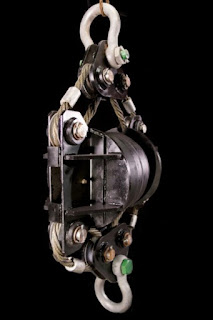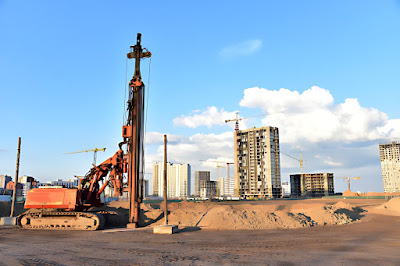Crane operators and construction professionals are always on the lookout for innovative equipment that can streamline their operations and enhance efficiency. The vibratory hammer is a groundbreaking tool that has revolutionized the construction industry. These powerful attachments have proven invaluable in various applications, including pile driving and foundation construction.
This article explores vibratory hammers' function and benefits as crane attachments, shedding light on their role in transforming traditional pile driving methods.
Vibratory hammers are specifically designed to drive piles into the ground, providing a stable foundation for structures. They are typically attached to cranes or excavators, allowing for precise control and easy maneuverability. With their unique mechanism, vibratory hammers produce high-frequency vibrations that transfer energy to the pile, enabling it to penetrate the ground effortlessly. This vibration reduces soil resistance and increases the speed of pile installation compared to conventional methods, making it an efficient choice for construction projects.
One of the significant advantages of using vibratory hammers as crane attachments is their versatility. These attachments can handle a wide range of pile types, including sheet piles, H-beams, and tubular piles, making them suitable for various construction applications. Vibratory hammers are highly adaptable and can be adjusted to meet different soil conditions, ensuring optimal performance and accuracy.
Furthermore, the use of vibratory hammers offers several benefits over traditional pile driving equipment:
The vibration-based technique minimizes noise and vibrations, making it an environmentally friendly option. This is especially crucial in urban areas where noise regulations are stringent.
The vibrations reduce the risk of damage to nearby structures, ensuring safer and more controlled operations.
The improved speed and efficiency of pile installation save both time and money for construction projects.
The vertical vibrations generated by vibratory hammers ease pile installation and enhance pile integrity. The vibrations help compact the soil around the pile, providing increased stability and load-bearing capacity.
Minimal Environmental Impact: Vibratory hammers impact the environment less than conventional pile driving methods. By reducing soil disturbance and minimizing noise and vibration, they help preserve the surrounding ecosystem.
When it comes to selecting the right vibratory hammer for crane attachments or vibratory pile driver for excavator, it is essential to choose a reliable supplier. Hydraulic Power Systems, Inc. (HPSI) is a renowned provider of high-quality hydraulic equipment, including vibratory hammers. With our extensive experience and expertise, we offer reliable and durable solutions that meet the demanding needs of the construction industry. Our pile driving equipment for sale ensures efficient pile installation while providing excellent value for money.
In conclusion, vibratory hammers have transformed the way pile driving is done in the construction industry. With their ability to deliver high-frequency vibrations and reduce soil resistance, these crane attachments offer numerous benefits, including increased speed, reduced environmental impact, and improved safety. When considering vibratory pile driving equipment, partnering with a trusted supplier like HPSI is crucial to ensure optimal performance and reliability. By harnessing the power of vibratory hammers, construction professionals can achieve faster and more efficient pile installation, ultimately leading to successful project completion.









